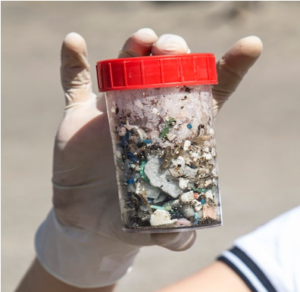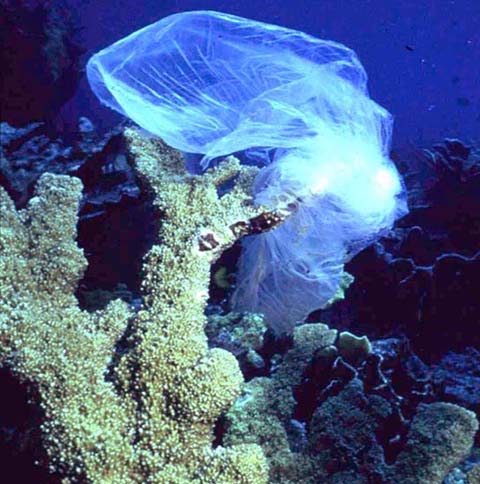
Image credit: Microsoft Word commons
Reference: Royer, Sarah-Jeanne, Sara Ferrón, Samuel T. Wilson, David M. Karl. “Production of methane and ethylene from plastic in the environment.” PloS One 13, e0200574 (2018).
Doi: https://doi.org/10.1371/journal.pone.0200574
Plastic? What’s the big deal?

Since the 1950’s, over 6 billion tons of plastic have been produced globally. Less than 10% of plastic is recycled, and 8 million tons wind up in the ocean annually. Plastic debris has been found in every environment from Mt. Everest to the depths of Marianas Trench. Ocean gyres accumulate waste into trash islands- the North Pacific garbage patch is larger than the state of Texas! Accumulation in the environment presents a substantial risk to vulnerable organisms. Exacerbating the problem, solar radiation degrades the waste into microplastics, which are difficult to clean up and easy to consume. Our increasing reliance on plastics has left many wondering about long-term impacts and how best to reduce the waste.
The Study
Researchers from the University of Hawaii measured hydrocarbon gases emitted from degrading plastics. Emissions were measured from seven different types of plastic including the most abundant plastic and worst polluter, polyethylene (shopping bags). Experiments were conducted in rooftop temperature-controlled incubators exposed to solar radiation. Different factors including plastic type, size, shape, and age were all considered, and control experiments were run in the dark.
What did they find?

Image credit: WikiMedia
All plastic types were found to produce methane (CH4) and ethylene (C2H4) when exposed to sunlight, while all dark treatments produced very little – none. Shape and size experiments found that the smallest form (powder) emitted the highest concentration of gasses. Age experiments showed that cumulative emissions continually increased; virgin and aged plastics emitted gas for the entire study. The rate of gas production was also found to increase with time.
What does this mean?
This work shows that methane, an important greenhouse gas, is being emitted from plastic pollution. Methane is one of the most important greenhouse gases. Non-CO2 gases made up nearly 30 % of total emissions in 2010, and methane concentrations have increased 150 % since 1750 (IPCC Fifth Assessment Report)!
Based on this study, methane is continuously being emitted as plastic breaks down. In fact, these results suggest that as plastics degrade, the higher surface area to volume ratio actually causes them to emit at an increasing rate! Therefore, over time, plastics are getting smaller, becoming harder to clean-up, and emitting more greenhouse gases! In a rapidly changing world, it is important for us to understand the ramifications of our actions. This study shows that the consequences of our plastic pollution are even greater than previously thought.
What to do?
- Avoid plastics whenever and wherever possible
- Bring re-usable shopping bags
- Decline a straw or bring a reusable one
- Use bar soaps and shampoo rather than packaged
- Never buy fruits or vegetables needlessly packaged in plastic
- Advocate!
- Look for a ‘Ban the Bag’ group in your area or start one!
- Petition for more/better garbage and recycling programs in your area
- Join ocean education and conservation groups life Surfrider and Ocean Conservancy
- Reduce! Reuse! Recycle!
I am a 2nd year Master’s student at the Memorial University of Newfoundland. I am researching the highly invasive species the European green crab, and the impact extreme weather events has on its population abundance and distribution.



